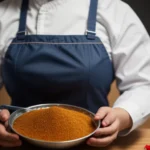From Hünkar Beğendi to Şiş Kebab: The Best of Turkish Cuisine
Turkish cuisine is known for its rich flavors and diverse ingredients that reflect the country’s history and culture. From savory kebabs to mouthwatering desserts, Turkish cuisine has something to offer for every palate. In this article, we will explore some of the best dishes in Turkish cuisine, from the classic Hünkar Beğendi to the famous Şiş Kebab.
1. Introduction to Turkish Cuisine
Turkish cuisine is a fusion of various culinary traditions, including Ottoman, Mediterranean, Middle Eastern, and Balkan cuisines. It is characterized by its use of fresh herbs, spices, and ingredients such as lamb, beef, poultry, and seafood. Turkish cuisine also features a variety of mezes (appetizers), kebabs, and desserts that are loved by people around the world.
2. Hünkar Beğendi
Hünkar Beğendi, also known as Sultan’s Delight, is a classic Ottoman dish that consists of tender lamb stew served over a bed of creamy eggplant puree. The dish is flavored with tomatoes, onions, garlic, and a hint of cinnamon, creating a rich and savory flavor profile. Hünkar Beğendi is a true representation of the opulent and decadent cuisine of the Ottoman Empire.
3. Şiş Kebab
Şiş Kebab is a popular Turkish dish made with marinated chunks of meat (usually lamb or beef) that are skewered and grilled to perfection. The kebabs are served with rice, grilled vegetables, and a side of tangy yogurt sauce. Şiş Kebab is a staple dish in Turkish cuisine and is enjoyed by locals and tourists alike.
4. Mezes
Mezes are small dishes served as appetizers or snacks in Turkish cuisine. They can include a variety of dishes such as stuffed vine leaves, hummus, grilled halloumi cheese, and grilled octopus. Mezes are meant to be shared and enjoyed with friends and family, adding a communal aspect to the dining experience.
5. Lahmacun
Lahmacun is a thin, crispy flatbread topped with a spicy mixture of minced meat, onions, tomatoes, and parsley. It is often referred to as Turkish pizza and is a popular street food in Turkey. Lahmacun is best enjoyed fresh out of the oven, topped with a squeeze of lemon juice and a sprinkle of parsley.
6. Börek
Börek is a savory pastry made with thin layers of dough filled with a mixture of cheese, spinach, or ground meat. The pastry is baked until golden and crispy, creating a delicious and satisfying snack or appetizer. Börek is a versatile dish that can be enjoyed for breakfast, lunch, or dinner.
7. Baklava
Baklava is a sweet and decadent dessert made with layers of phyllo dough, nuts, butter, and sugar syrup. The dessert is flaky, crunchy, and dripping with syrup, creating a delightful combination of textures and flavors. Baklava is a popular dessert in Turkish cuisine and is often served during special occasions and celebrations.

8. Turkish Coffee
Turkish coffee is a strong and flavorful coffee that is brewed by simmering finely ground coffee beans with water and sugar in a small pot called a cezve. The coffee is served in small cups and is enjoyed slowly, savoring every sip. Turkish coffee is an integral part of Turkish culture and is often enjoyed with friends and family.
9. Manti
Manti is a traditional Turkish dish that consists of small dumplings filled with seasoned ground meat or cheese, topped with a garlic yogurt sauce and drizzled with spicy tomato butter. The dumplings are steamed or boiled until tender and are served piping hot. Manti is a comforting and satisfying dish that is enjoyed throughout Turkey.
10. Pide
Pide is a boat-shaped flatbread topped with various ingredients such as minced meat, cheese, eggs, and vegetables. The bread is baked until golden and crispy, creating a delicious and satisfying meal. Pide is often served as a main course or as a snack, and is enjoyed by people of all ages.
11. Kumpir
Kumpir is a popular street food in Turkey that consists of a baked potato that is split open and filled with a variety of toppings such as cheese, corn, olives, pickles, and sausage. The potato is mashed together with the toppings, creating a hearty and flavorful dish. Kumpir is a fun and indulgent meal that is enjoyed by locals and tourists alike.
12. Künefe
Künefe is a traditional Turkish dessert made with shredded phyllo dough, soaked in syrup, and layered with sweet cheese. The dessert is baked until golden and crispy, creating a sweet and savory combination of flavors and textures. Künefe is often served warm and topped with pistachios or clotted cream, adding a rich and creamy element to the dish.
13. Turkish Delight
Turkish Delight, also known as lokum, is a chewy and sweet confection made with sugar, water, and starch, flavored with rosewater, citrus, or nuts. The candy is dusted with powdered sugar and cut into small cubes, creating a delightful and indulgent treat. Turkish Delight is a popular dessert in Turkey and is often enjoyed with a cup of Turkish tea.
14. Raki
Raki is a traditional Turkish anise-flavored alcoholic drink that is often referred to as the “lion’s milk.” The drink is made by distilling grape pomace and aniseed, creating a clear and potent spirit. Raki is usually served with a glass of cold water and is enjoyed as an aperitif or alongside a meal. Raki is considered the national drink of Turkey and is a symbol of Turkish hospitality and culture.
15. Conclusion
Turkish cuisine is a vibrant and diverse culinary tradition that offers a wide range of flavors, ingredients, and dishes. From savory kebabs to sweet desserts, Turkish cuisine has something to offer for every palate. Whether you are enjoying a classic dish like Hünkar Beğendi or indulging in a sweet treat like Baklava, Turkish cuisine is sure to delight and satisfy your taste buds. So next time you are craving a taste of Turkey, be sure to explore the rich and flavorful world of Turkish cuisine.
FAQs about “From Hünkar Beğendi to Şiş Kebab: The Best of Turkish Cuisine”
- What makes “From Hünkar Beğendi to Şiş Kebab: The Best of Turkish Cuisine” a must-have for culinary enthusiasts? This book offers a comprehensive exploration of Turkish cuisine, featuring iconic dishes like Hünkar Beğendi and Şiş Kebab, providing readers with insights into the rich flavors, cultural significance, and cooking techniques of Turkish cooking.
- Which classic Turkish dishes are highlighted in this guide? “From Hünkar Beğendi to Şiş Kebab” features a diverse range of classic Turkish dishes, including savory kebabs, flavorful mezes, hearty stews, and indulgent desserts, showcasing the breadth and depth of Turkish culinary heritage.
- How does this book celebrate the cultural heritage and culinary diversity of Turkey? This book celebrates the cultural heritage and culinary diversity of Turkey by exploring the regional variations, historical influences, and seasonal ingredients that characterize Turkish cuisine, providing readers with a deeper appreciation for its richness.
- Are specific Turkish ingredients and cooking techniques highlighted in this book to exemplify the best of Turkish cuisine? Yes, this book highlights specific Turkish ingredients like lamb, eggplant, yogurt, and spices, along with traditional cooking techniques such as grilling, braising, and baking, showcasing the unique flavors and textures of Turkish dishes.
- Can readers expect to find practical recipes and tips for preparing Turkish dishes at home from this book? Absolutely! “From Hünkar Beğendi to Şiş Kebab” provides practical recipes, cooking tips, and serving suggestions for readers to recreate the flavors of Turkey in their own kitchens, allowing them to experience the best of Turkish cuisine from the comfort of home.
Advantages:
- Cultural Representation: The title “From Hünkar Beğendi to Şiş Kebab: The Best of Turkish Cuisine” accurately represents Turkish culinary heritage by showcasing iconic dishes like Hünkar Beğendi and Şiş Kebab, providing readers with a glimpse into the diverse flavors and traditions of Turkish cuisine.
- Culinary Exploration: By highlighting the best of Turkish cuisine, the title encourages readers to explore the depth and richness of Turkish gastronomy, fostering a deeper appreciation for the variety of flavors, ingredients, and cooking techniques found in Turkish dishes.
- Educational Value: The title offers readers valuable insights into Turkish culinary traditions, regional specialties, and the cultural significance of certain dishes like Hünkar Beğendi and Şiş Kebab, enriching their understanding of Turkish food culture.
- Practicality: As a guide to Turkish cuisine, the title serves a practical purpose for readers interested in experiencing authentic Turkish flavors, providing them with recommendations for must-try dishes and inspiration for exploring Turkish restaurants or cooking Turkish recipes at home.
- Promotion of Cultural Understanding: By focusing on Turkish cuisine, the title promotes cultural understanding and appreciation, inviting readers to learn about the culinary heritage and traditions of Turkey and fostering a deeper connection to Turkish culture.
Disadvantages:
- Limited Scope: While the title highlights iconic Turkish dishes like Hünkar Beğendi and Şiş Kebab, it may overlook lesser-known Turkish foods or regional specialties, potentially limiting the breadth of the guide and excluding certain aspects of Turkish cuisine.
- Audience Limitation: The title may primarily appeal to readers with a specific interest in Turkish cuisine or food culture, potentially excluding those who prefer other types of cuisine or are seeking a broader overview of global culinary traditions.
- Accessibility Issues: Some Turkish ingredients or dishes may be difficult to find outside of Turkey or specialty markets, limiting the practicality of experiencing authentic Turkish cuisine for readers in certain regions.
- Subjectivity: The selection of “the best” Turkish cuisine may be subjective and may not align with every reader’s taste preferences or expectations, potentially leading to disappointment if certain beloved dishes are omitted or unfamiliar ones are included.
- Cultural Simplification: Focusing solely on iconic Turkish dishes may oversimplify the complexity and diversity of Turkish cuisine, potentially overlooking regional variations, historical influences, or the nuances of Turkish culinary traditions.
















